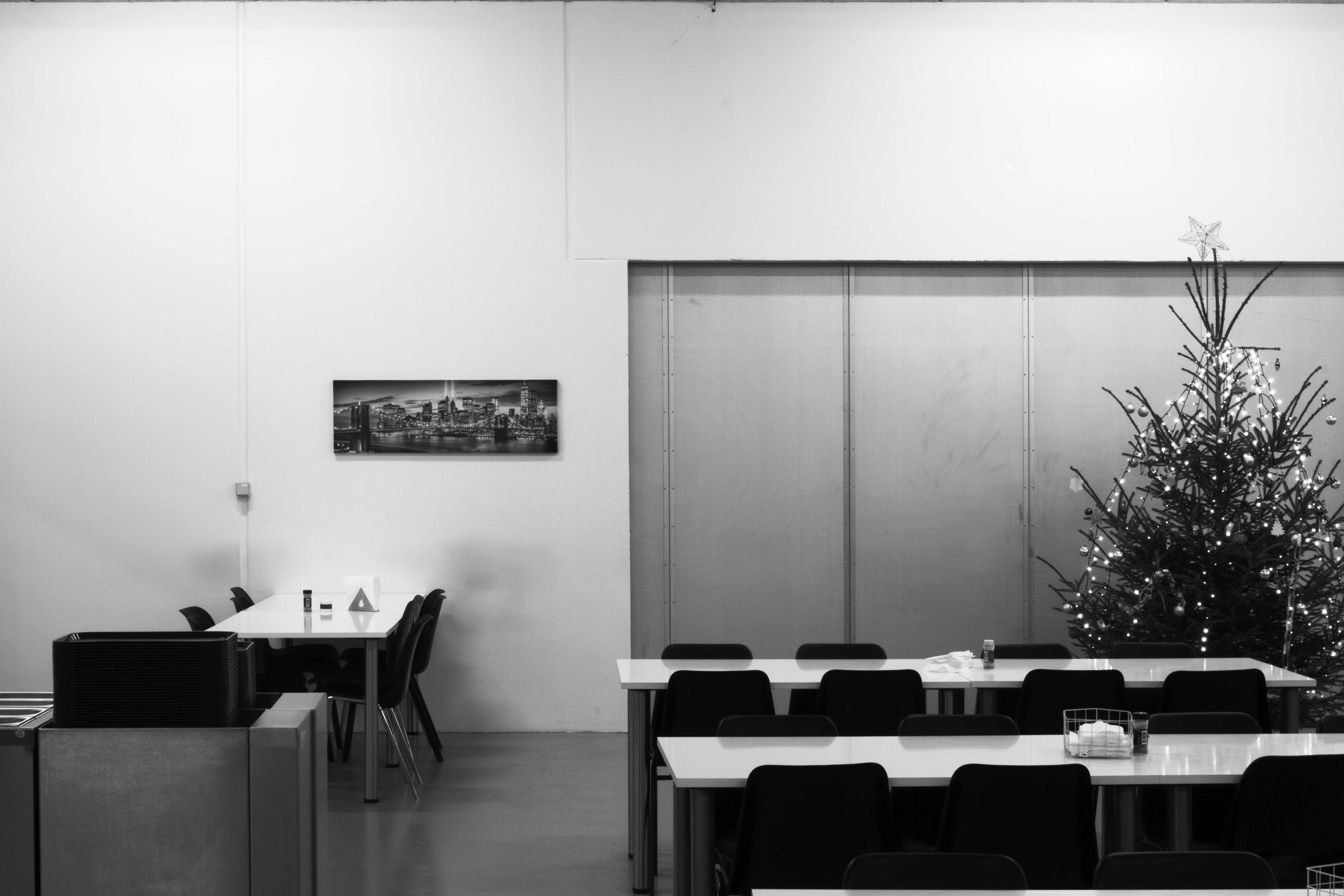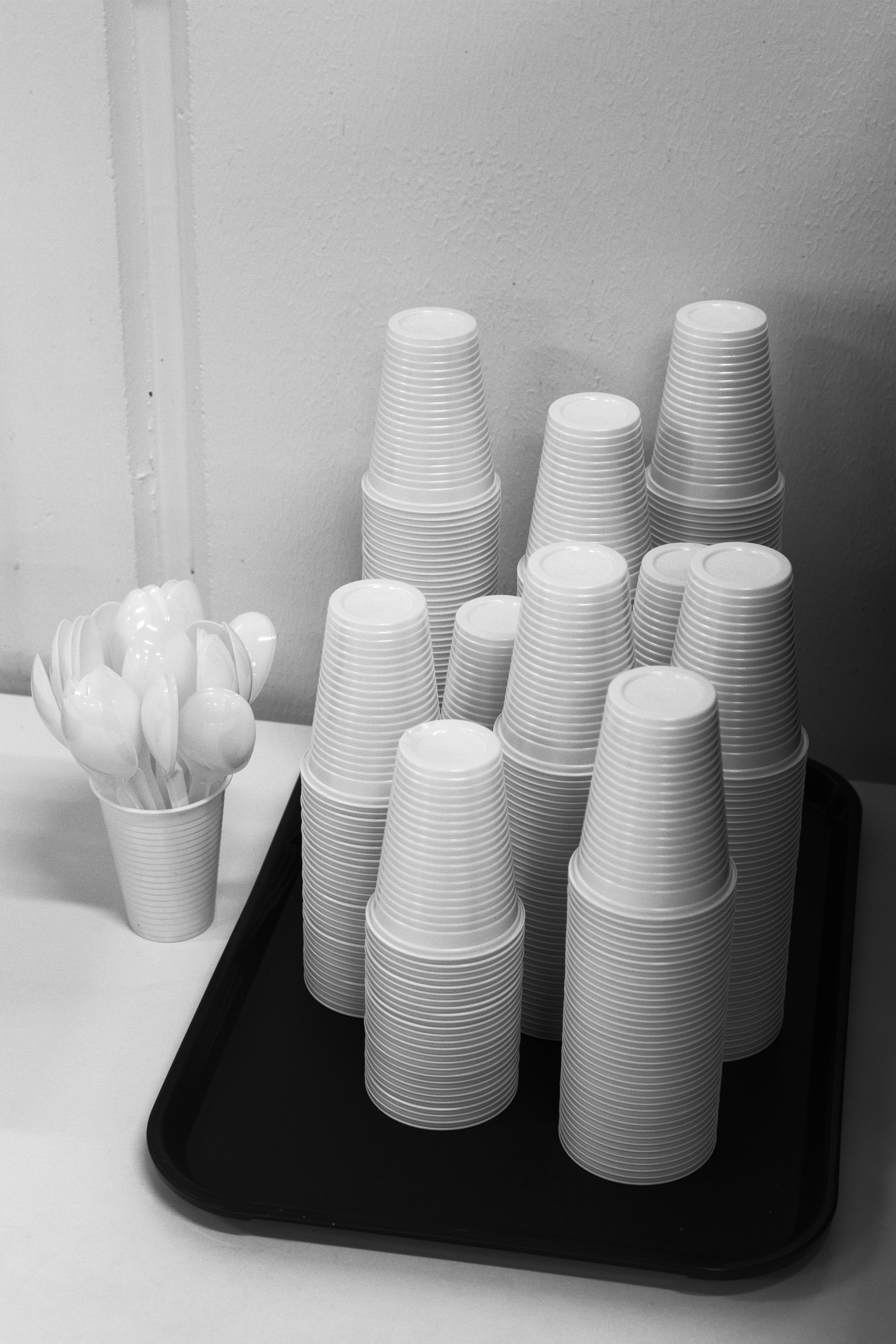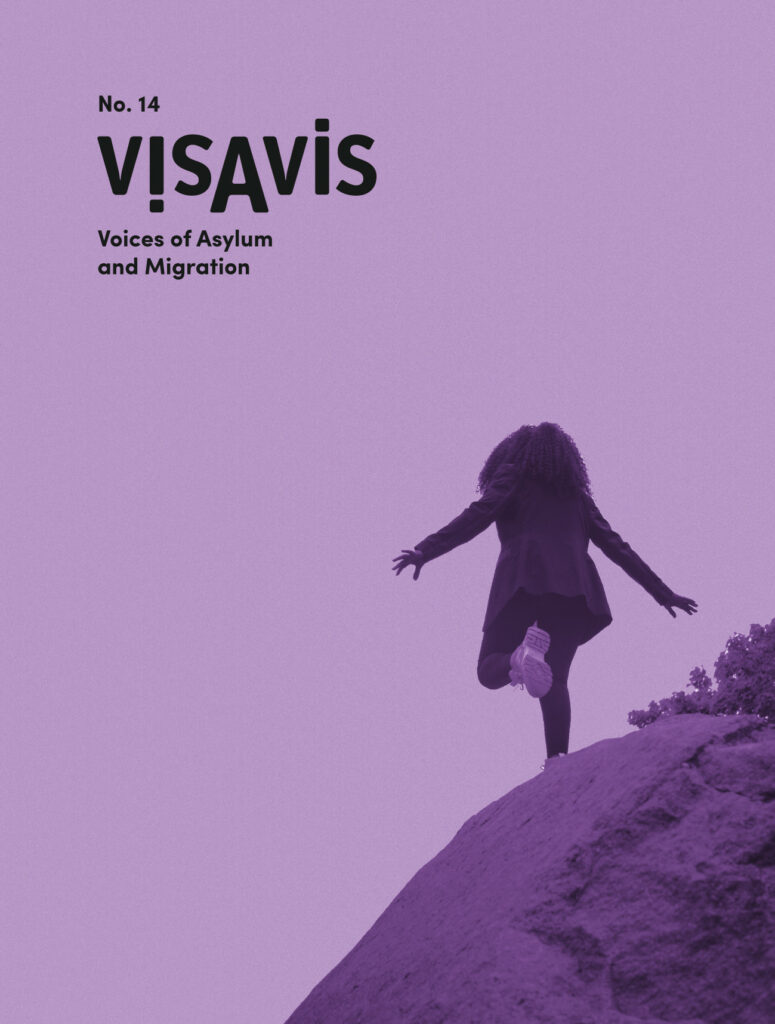visAvis #13 is out now! Pick up a printed copy somewhere in Copenhagen. The rest of the magazine will be published online during the next months.
BY VISAVIS • PHOTOS BY PAULA DUVÅ • 2018

The pair of images at the start of this issue are a portrait of asylum and migration in 2018. A “departure centre” with no departures; a print on the wall of a destination nobody is heading towards; and only enough remnants of mercy to fill a flimsy plastic cup.
The veneer of Departure Center Kærshovedgård is so thin that one can’t possibly believe it, but one can interpret the truth however one wants. To some people, the system is broken because it is cruel and inhuman, as Solmaz Farnian Hamadani proves beyond any doubt in her testimony. To others, the system is broken because it doesn’t send enough people away; doesn’t keep enough people out.
In 2018, we have reached a point where almost any public official who is talking about “fixing the broken system” is talking about the system to stop migration, to lock people in place. A system that might accept movement is not called broken, it’s simply called impossible. The fix will be something fixed: with fenceposts and ultimata and iron bands of European privilege.
It may look something like the EU-wide plans documented by the group InEUmanity Malmö in their bulletin, Seven deadly sins. In all likelihood, such initiatives will be layered over existing systems of passive neglect, as described by Eden in her attempts to learn the language of the country where she lives. Bureaucrats will simply sharpen the jagged edges of the broken system.

The season is ripe with spite. When politicians celebrate the tightening of discriminatory laws, they feel no need to mask their politics with claims of urgency or moral panic. They perform for the public with light hearts. Facebook followers can laugh at their antics, because the cruelty behind them, the fear, is a shared value, a new European identity.
When a value becomes so mainstream it takes a choice to reject it – and it takes alternatives. Are there, in fact, living alternatives to cruelty? Is there a way back from this place, this horrible endpoint of the idea of common humanity?
visAvis #13 is part of that other system, the impossible one. We hope that there are some hints at answers in these pages. Look for clues; anything that speaks to you, and rings true to your own experiences and journeys on this planet.
Search each of the texts, and the illustrations, too. It was not our decision as editors, but we think it was something more than a coincidence, that so much of the artwork in this issue shares a form. It centers on single human figures. The artists express a world of thoughts and feelings within this frame, but they seem to have a unanimous feeling that this is the place to look now: at one another as people.
The solutions will be communal ones, as they always are. But it is individual stories, emotions, connections and healing that will get us there. Like Reem Zakzouk’s poems to pain and friendship; the narratives of brave, lonely travels in Causes of blindness; Vahid Evazzadeh’s one-act sketch, Six bullet holes; or the story of one woman’s strength told to Liselot Kattemölle. We were swept out of the human family in a wave, but find our way back in a trickle, one by one.
The wave – or the flood, or the tsunami – is the imagery of 2015. It will start to look more and more artificial with distance; future historians will examine this imagery as we do the paintings of past centuries. In this issue, with a presentation of the film The Migrating Image, Florian Stark and Stefan Kruse make a start on that work.
The next task is recognising that imagery, control over symbols, is not something that flows from history or the media; it is available to everyone. Babak Inanlou shows, with photos from Calais, how observers remake a scene just by viewing it. Jean Claude Mangomba demonstrates that migrant representation is still up for grabs with his rallying cry, Cowboy, get stand. Comic artists and young refugees make powerful art together in Uledsaget, reviewed for our Recommendations section by Vibeke Nielsen. And Solomon Amabo and Loke Bisbjerg Nielsen take the media into their own hands to insist that the crisis of Cameroonian refugees in Nigeria is headline news.
What politicians call “fixing the broken system” is not truly difficult. Tightening immigration laws is not truly difficult. Rebranding more prisons as “departure centers” is not truly difficult. Transformation is difficult – and it’s our job. Lone Aburas confronts this reality in an excerpt from her award-winning book Det er et jeg der taler, while Ali Ali urges a renewed and honest effort in Barriers on the road of transformative dialogue. As they show, the step beyond forming personal connections, and beyond forming new imagery, is forming community, and this is the most complicated by far.
Nevertheless, community is just like a connection or an image: anybody can make it. The fragments of the impossible system are all around you to work with.
